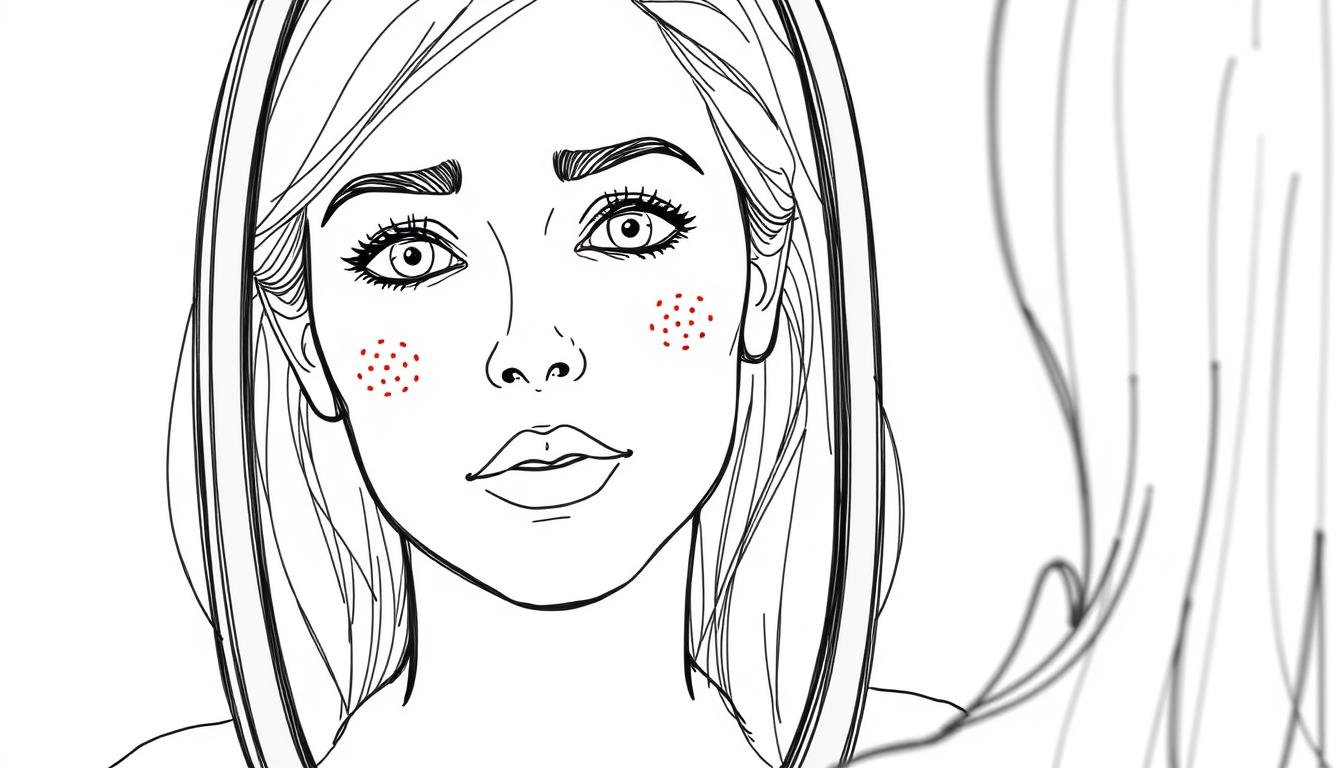Imagine waking up to find a cluster of tiny red bumps around your mouth. They’re slightly itchy, maybe a bit painful, and frustratingly visible. If you’re among the estimated 0.5-1% of adults dealing with perioral dermatitis, you know this scenario all too well.
Conventional treatments typically involve topical antibiotics, antifungals, or steroids—each with their own limitations and potential side effects. But what if there was a gentler, drug-free approach that could help calm your irritated skin?
Red light therapy (RLT) has emerged as a promising option for various inflammatory skin conditions. In this evidence-based guide, we’ll examine exactly how it works for perioral dermatitis, what the research says, and how to choose the right device for your needs.
Perioral dermatitis typically appears as small red bumps around the mouth area
Understanding Perioral Dermatitis: Causes and Symptoms
Perioral dermatitis is a common inflammatory skin condition characterized by clusters of small, red, sometimes pus-filled bumps around the mouth, nose, and occasionally the eyes. According to the National Institutes of Health, women between ages 20-45 are most commonly affected, though it can occur in anyone.
Common Triggers and Contributing Factors
While the exact cause remains unclear, several factors are known to trigger or worsen perioral dermatitis:
The condition often creates a frustrating cycle: the irritation leads to treatments that can sometimes worsen the underlying problem. This is where red light therapy offers a different approach—addressing inflammation without disrupting the skin’s natural healing processes.

Perioral dermatitis typically affects the skin around the mouth while sparing the immediate lip border
The Science Behind Red Light Therapy for Skin Inflammation
Red light therapy, also known as photobiomodulation or low-level light therapy, uses specific wavelengths of visible and near-infrared light to stimulate cellular processes. But how exactly does it help with perioral dermatitis?
Key Mechanisms for Dermatitis Relief
Clinical Evidence for Dermatitis Applications
While studies specifically on perioral dermatitis are limited, research on related inflammatory skin conditions provides valuable insights:
Ablon et al. (2018) found that red light therapy (633nm) significantly reduced inflammatory lesions in rosacea patients by 21% after just 8 weeks of treatment.
Kleinpenning et al. (2010) demonstrated that red light therapy decreased inflammation markers in psoriasis patients while improving skin barrier function.
A 2019 meta-analysis by Wunsch and Matuschka found that red and near-infrared light therapy reduced inflammatory skin symptoms by an average of 31.8% across multiple skin conditions.
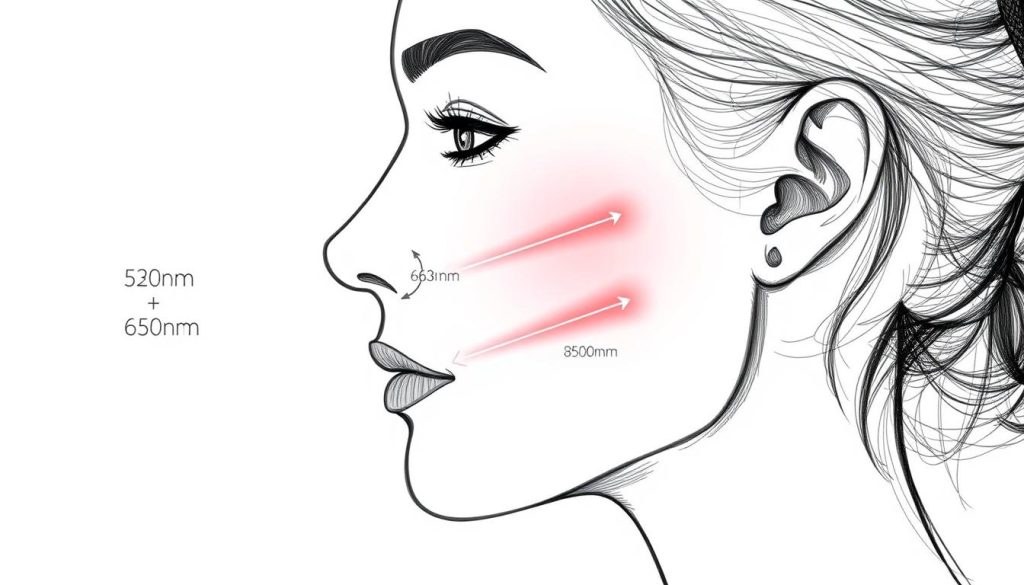
Different wavelengths of red and near-infrared light penetrate to varying depths in the skin
Choosing the Right Red Light Therapy Device for Perioral Dermatitis
When selecting a device for treating perioral dermatitis, several factors deserve careful consideration: wavelength, power output, treatment area, and practical usability.
Critical Device Specifications
Comparing Leading Device Options
The market offers various form factors, from handheld wands to panels and masks. Each has advantages for perioral dermatitis treatment:
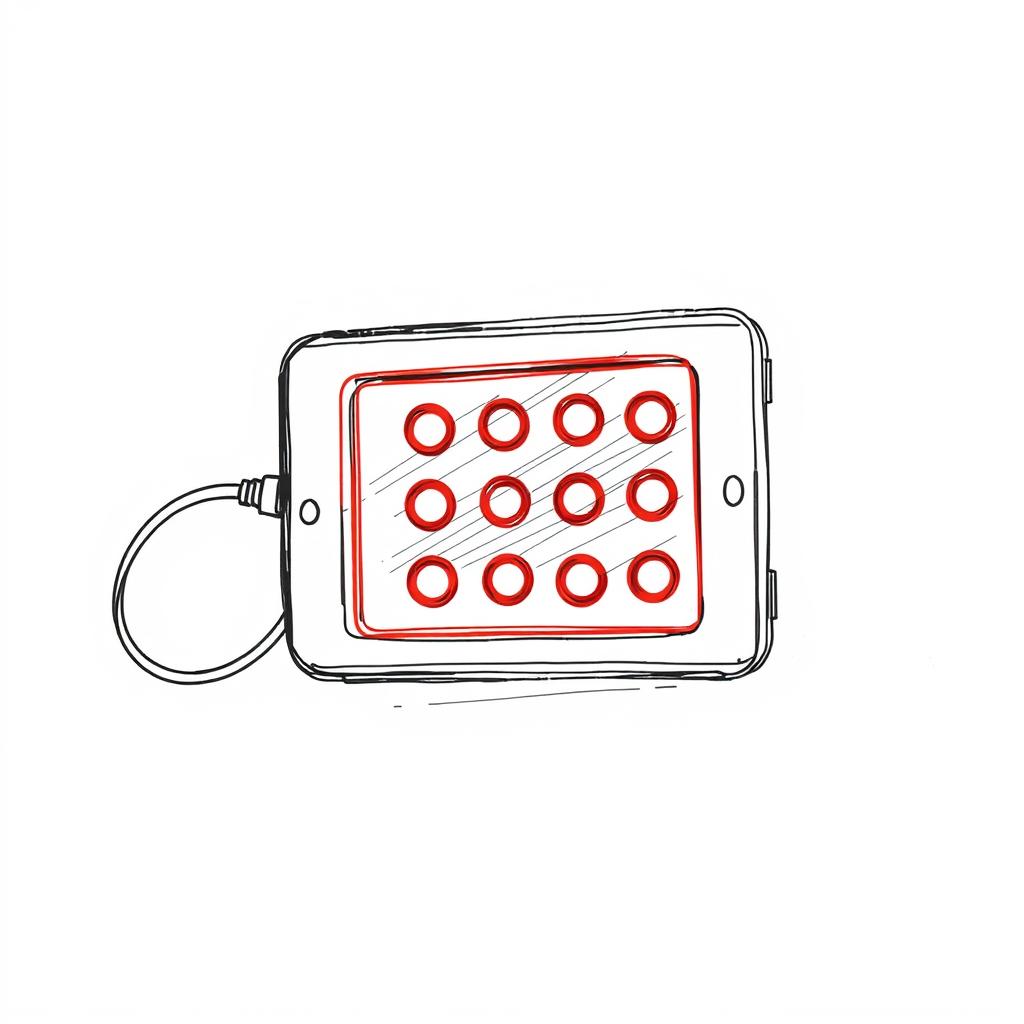
Targeted Panels
The RLT Home Total Spectrum Mini (12″×12″) offers an ideal balance of coverage and precision for facial treatments. With 72 LEDs delivering seven clinically-validated wavelengths, it provides comprehensive therapy for the perioral region while being compact enough for convenient use.

Handheld Devices
Brands like Joovv offer portable options with focused beams. While convenient, these typically cover smaller areas and may require longer treatment times to address the entire affected region.
Find Your Ideal Red Light Solution
Not sure which device is right for your perioral dermatitis? Compare leading red light therapy panels side-by-side to find your perfect match.
Different device types offer varying coverage, power, and convenience for treating perioral dermatitis
Effective Treatment Protocols for Perioral Dermatitis
Consistency is key when using red light therapy for perioral dermatitis. Based on clinical research and practitioner experience, here’s a framework for developing your treatment approach:
Recommended Treatment Parameters
| Parameter | Recommendation | Notes |
| Session Duration | 5-10 minutes initially, building to 10-20 minutes | Start conservatively and increase as tolerated |
| Frequency | 4-7 sessions per week | Daily is ideal during active flares |
| Distance from Device | 6-12 inches (15-30 cm) | Follow manufacturer guidelines for optimal irradiance |
| Course Length | Minimum 4-8 weeks | Initial improvements often seen within 2-3 weeks |
| Maintenance | 2-3 sessions weekly | After symptoms improve |
Complementary Skin Care Practices
Red light therapy works best as part of a comprehensive approach to managing perioral dermatitis:
Important: If you’re currently using prescription medications for perioral dermatitis, consult your dermatologist before incorporating red light therapy. While generally compatible with most treatments, your doctor may recommend specific timing or protocol adjustments.

Consistent treatment sessions of appropriate duration are key to seeing results with red light therapy
What Results to Expect: Timeline and Effectiveness
Managing expectations is important when using red light therapy for perioral dermatitis. While many users experience significant improvement, results vary based on individual factors and condition severity.
Typical Timeline for Improvement
A 2021 study by Jagdeo et al. found that 85% of patients with inflammatory skin conditions showed measurable improvement after 6 weeks of consistent red light therapy treatment.
Monitoring Your Progress
To track your results effectively:
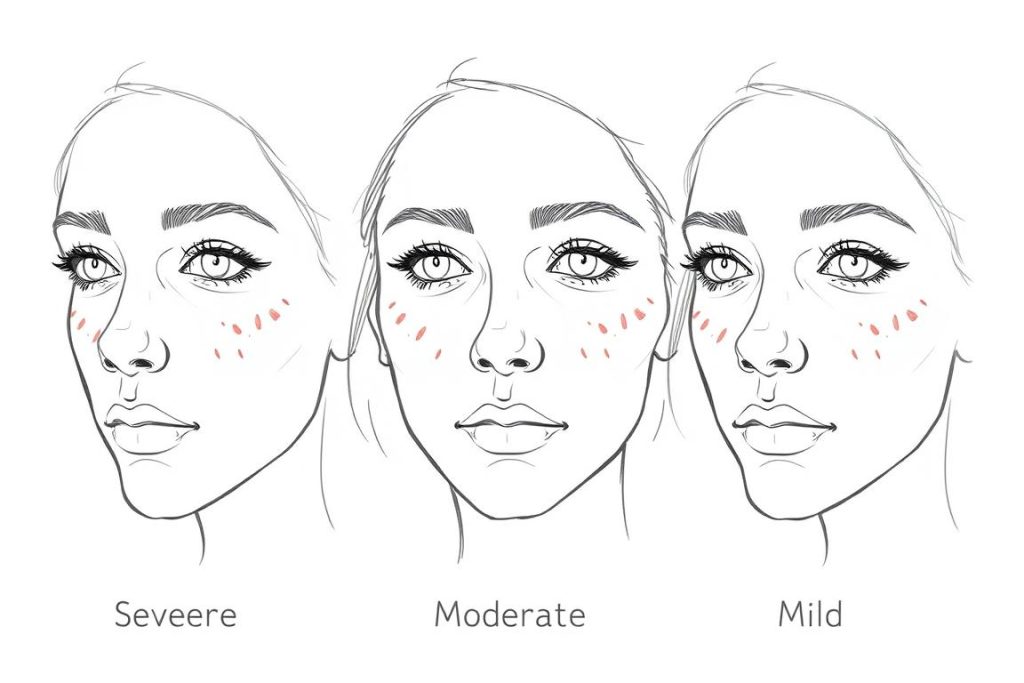
Perioral dermatitis typically improves gradually over several weeks of consistent red light therapy
Practical Considerations and Safety Guidelines
Red light therapy is generally considered safe with minimal side effects, but proper use is essential for optimal results and comfort.
Potential Side Effects and Precautions
Generally Safe For Most People
- Non-invasive and non-thermal
- No UV radiation exposure
- Compatible with most skin types
- Can be used alongside many treatments
- No recovery time needed
Precautions to Consider
- Temporary redness possible after treatment
- May initially cause mild dryness
- Not recommended with photosensitizing medications
- Requires eye protection with certain devices
- Results require consistent use over time
Maximizing Treatment Effectiveness
The RLT Home Total Spectrum Compact offers an excellent option for treating perioral dermatitis with its 216 LEDs and seven therapeutic wavelengths. Its pre-programmed “Skin & Anti-Aging” mode takes the guesswork out of treatment parameters, delivering the optimal combination of red and near-infrared light for inflammatory skin conditions.
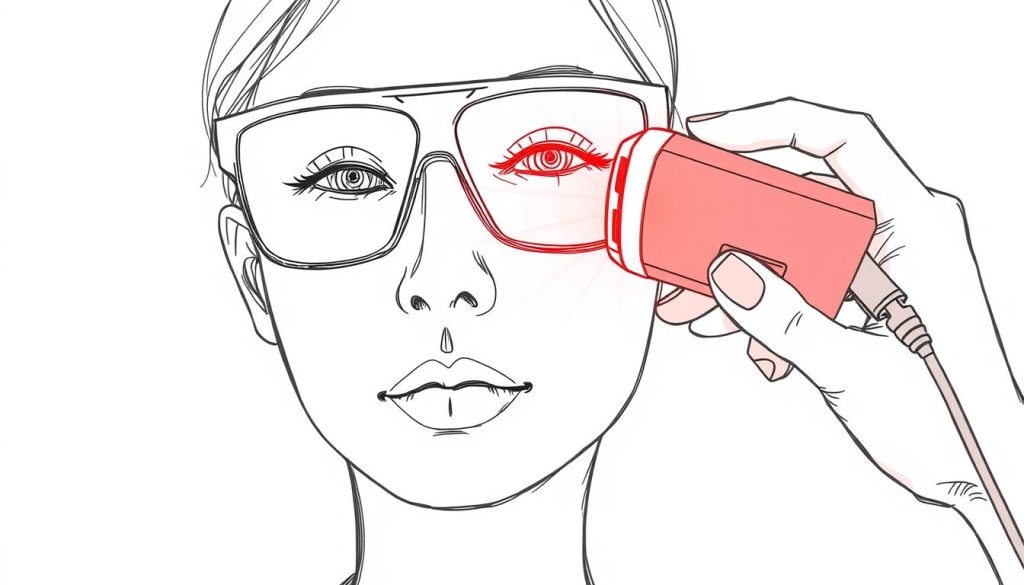
Always follow manufacturer guidelines for eye protection during red light therapy treatments
Can I use red light therapy during an active perioral dermatitis flare?
Yes, red light therapy is generally suitable during active flares and may help reduce inflammation and discomfort. However, start with shorter sessions (5 minutes) and increase gradually as tolerated. If you notice any increase in irritation, reduce frequency or consult a healthcare provider.
How does red light therapy compare to topical antibiotics for perioral dermatitis?
While topical antibiotics target potential bacterial contributors to perioral dermatitis, red light therapy addresses the underlying inflammation and supports skin healing. Many practitioners now recommend combining approaches—using red light therapy alongside conventional treatments for enhanced results and potentially reduced medication dependency.
Can I apply skincare products before red light therapy?
For optimal results, use red light therapy on clean, dry skin. Products containing ingredients that might block light penetration (zinc oxide, titanium dioxide, thick oils) should be applied after your light therapy session. Simple hydrating serums with hyaluronic acid can sometimes enhance light penetration when applied before treatment.
Conclusion: Is Red Light Therapy Right for Your Perioral Dermatitis?
Red light therapy offers a promising, non-pharmaceutical approach to managing perioral dermatitis. By addressing inflammation, supporting skin barrier function, and promoting natural healing processes, it provides benefits that complement conventional treatments without the side effects of topical steroids or antibiotics.
The research supports its effectiveness for inflammatory skin conditions, with studies showing significant improvements in redness, lesion count, and overall skin health. While not a miracle cure, consistent application following proper protocols can yield meaningful results for many sufferers.
When selecting a device, prioritize those offering clinically validated wavelengths (630-660nm and 810-850nm), adequate power density, and convenient form factors for regular use. The RLT Home series, particularly the Total Spectrum Mini for targeted treatment or the Total Spectrum Compact for broader coverage, provides the optimal combination of therapeutic wavelengths, zero EMF at treatment distance, and pre-programmed modes specifically designed for skin conditions.
Take Control of Your Skin Health
Ready to address your perioral dermatitis with evidence-based light therapy? Find the perfect device for your needs by comparing leading options side-by-side.
Remember that consistency is key—commit to a regular treatment schedule for at least 4-8 weeks to evaluate effectiveness for your specific case. Document your progress with photos and consider consulting a dermatologist to integrate red light therapy into your comprehensive skin care plan.
— David, independent RLT researcher

With consistent treatment, many people experience significant improvement in perioral dermatitis symptoms

